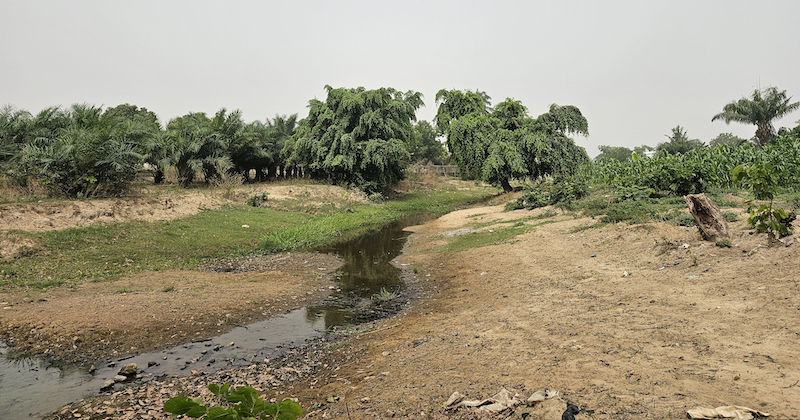


Irrigation and global nutrition
Photo courtesy of Bhoktear Khan June 25, 2025
Study examines connection between irrigation and improved dietary diversity in children in the Global South
Irrigation expansion can increase agricultural production, which can improve nutrition and health. But it isn’t known whether and how this increase in irrigation changes the diet of the local population where irrigation expansion occurs.
A new study led by University of Delaware researchers examined survey data from more than 9,000 rural communities comprising more than 70,000 households in 26 countries in the Global South, a designation given to 134 states from Central and South America, Africa, Asia and Oceania. They then combined that data with global georeferenced datasets on irrigation infrastructure changes.
They found that dietary improvements vary depending on several factors, and the areas where irrigation expansion occurs do not automatically see an increase in food security simply because that area is growing more crops.
The research was led by Piyush Mehta, who received his doctorate degree from UD in 2024 and now works as a Software Engineer at Esri, and Kyle Davis, assistant professor in the Department of Geography and Spatial Sciences and the Department of Plant and Soil Sciences and resident faculty at the UD Data Science Institute.
One of the biggest findings of the paper was the discovery of a positive correlation between irrigation expansion and child dietary diversity in regions that do not have sufficient water resources to support irrigation expansion.
"We developed a global dataset of irrigated areas, published last year in Nature Water, which allowed us to explore associations between irrigation expansion and nutritional outcomes, not only regionally, but across the entire Global South," said Mehta, who served as the lead author of the paper. "This provided us with unique insights into how irrigation impacts child nutrition on a global scale."
Mehta said that their research underscores that simply increasing irrigation does not guarantee improved nutrition outcomes.
"It’s essential to adopt context-specific strategies to balance the nutritional benefits with sustainable water use,” Mehta said.
“We found that diet tends to benefit more in places where water is being used unsustainably,” Davis said. “So, there is this trade off we found: some places are improving nutrition but using water unsustainably.”
In newly irrigated areas with sufficient water resources, however, there was not much of a dietary improvement with the local population as those newly irrigated areas tend to produce more cash crops and export-oriented food items.
To conduct the study, Davis and Mehta looked at the dietary diversity of households through surveys conducted by each country’s health or agricultural ministries and organizations such as USAID. They then looked at irrigation changes through time to identify households located in places which might benefit from irrigation expansion, and used statistical models to see whether there were significant associations between irrigation expansion and improvements in diet diversity.
“We found that overall, there is a positive association. Places where there’s more irrigation expansion tend to have a larger improvement in diets,” said Davis. “But we found that effect was more pronounced in places where there was existing water scarcity or water stress.”
This was mostly due to cropping patterns. In areas where there’s water stress, growers tended to prioritize staple crops and nutritious crops like fruits and vegetables. This increases the mix of crop production in those places, and those food categories were benefitted in local diets.
In the places where water is being used sustainably, much of the increase in cropping was attributable to more export-oriented cash crops.
“They do presumably have an increase in production, but nutrition does not appear to be the primary reason,” said Davis. “We see crops like sugar cane and cotton and other crops that were receiving the additional irrigation. It’s an interesting trade off we identified where, ideally, you’d see the same level of benefit in all the places where irrigation is expanding but because of a variety of economic reasons, the cropping choices that farmers make in the places where there's water that's relatively abundant aren't cropping choices that are benefiting nutrition.”
Contact Us
Have a UDaily story idea?
Contact us at ocm@udel.edu
Members of the press
Contact us at mediarelations@udel.edu or visit the Media Relations website

